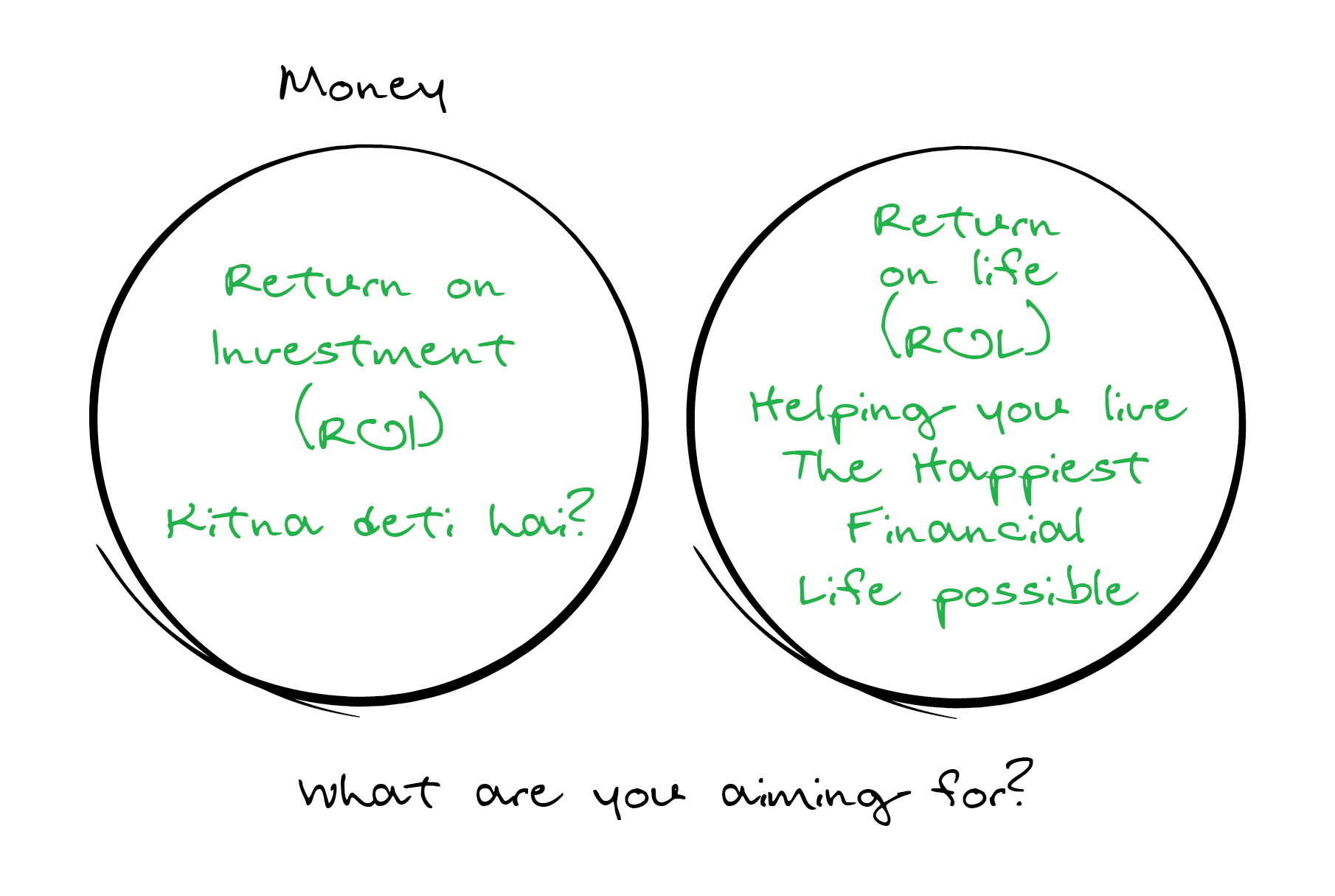A Tale of 2 Investors
This is a real story of 2 corporate executives who had most of their wealth tied to their company stock. Each of them had 80% or more exposure to their company. (Names have been changed for confidentiality).
Ajay Mathur (55 years old) is a hotshot executive with a Bank (that has grown aggressively over the last 10 years) and Ram Sharma (74 years old) is a retired Corporate Executive with an agriculture industry company (that has made tons of acquisitions and thus has a huge debt). Ajay had around Rs.8 Crore in his company whereas Ram had around Rs.15 Crore exposure to his company (Ram was getting significant dividends as his retirement income).
Both of them met with an advisor 18 months ago who spent time with them to understand their financial needs and priorities. I won’t get into the minute details of their financial plan or the broader advice they were given, in this post. However, one of the key things that both Ajay and Ram were told was to reduce the risk of concentration in their portfolio (That means selling off their company stock and diversifying this into other stocks through a diversified mutual fund portfolio).
Ajay and Ram were in love with their respective holdings and they believed that their companies would go up for ever and Why Not. Both were involved in respective company operations and felt that they knew stuff. However, for some reason, Ajay decided to follow his advisor and partially offloaded 50% of his stock. Ram said “My company has appreciated and it’s giving me great dividends. I know the promoters so I will stick around ”.
Ram actually needed approximately Rs.6 Crore for his Retirement Goal to maintain his lifestyle for the next 30 years. He had an additional Rs.2 Crore beyond this stock. The advisor had told him to book out Rs.6 Crore as his safety net and to keep the rest. He was super confident that he was doing fine and didn’t need help.
Fast forward 2020. Both their company stocks were down by 95-98%. Ram’s holding of Rs.15 Crore was down to Rs.30 Lakh and with his other Rs.2 Crore (which was now Rs. 1.7 Crore) , he had Rs.2 Crore left. Ajay, on the other hand, had managed to save Rs.4 Crore (out of his Rs.8 Crore) and along with his Rs.1.5 Crore and thus had a solid portfolio of Rs.5.5 Crore. On the other hand, diversified mutual funds which had these stocks in their portfolio were up in value as of 15/01/2020.
Both of them called the advisor now – Ajay to thank the advisor for saving him (What is the value of this advice? It’s priceless, right!) and Ram to ask for help as he was concerned about his retirement (Looking for someone to help him through this phase. This guidance is priceless too).
This is a typical scenario with a lot of corporate executives with sizeable holding of their company stock. The first cardinal rule of investing is to manage risks – protect what you have. It is not about investing for performance. It is about prudent investing to manage risks and making sure you have money when you need it. It is about making sure that you have the money for your financial needs (Yes, the markets are down by 30% and they will recover at some point of time).
The key thing to figure out is “What is your Number?”. I mean how much do you need to achieve all your financial goals and ensuring these goals are first addressed through a diversified portfolio. You cannot leave any of your key goals to the risk of concentration.
Here are some simple and easy guidelines to follow (Not just for people with concentrated investment holdings, but for every investor)
1. Any money that you need in the next 3 years should never be in Equity. This means that you should not be dependent for your day-to-day needs on Equity investments. Equity is purely a long term wealth creation and inflation protection asset for you. I will not get into complex strategies here. It is a very simple thing that everyone can follow. This is also called as Time Diversification (I will be covering Investing for Managing Risk in my future post).
2. Ensure that all your financial needs are taken care of through a diversified portfolio so that one Bank going bust or one debt fund delivering a negative return does not impact your overall portfolio , financial well-being and financial needs. Focus on the concept of a Total Portfolio Return.
3. Any money that you require for your day-to-day should be provided through liquid funds, and savings accounts. There is a concept of income laddering which is the subject of a separate post but the point here is that you should not depend on Equity Dividends for your Regular Income Needs.
4. No Single Investment or Concentrated Stock to have more than 20% of your portfolio. The only exception is that if all your financial needs are taken care of and you still have a buffer left and you then want to take that additional risk of holding a concentrated stock – go ahead and do it.
Sir John Templeton left us a wonderful quote – The four most dangerous words in investing are: ‘this time it’s different.’ I would extend this to most corporate executives who say “My company stock is different.”





 and then tap on
and then tap on 

0 Comments